India is vulnerable to both natural and human-induced disasters. Natural disasters that commonly occur in India include floods, cyclones, earthquakes, landslides, and droughts. These disasters can be categorized as slow-onset like droughts or rapid-onset like earthquakes. They cause widespread damage and disruption. India has developed systems for disaster management but remains at risk given factors like its large population, urbanization, and effects of climate change. The economically weak face greater vulnerabilities during disasters. After disasters, rehabilitation and reconstruction aim to restore affected communities while encouraging necessary adjustments. Various agencies in India are responsible for managing different types of disasters.
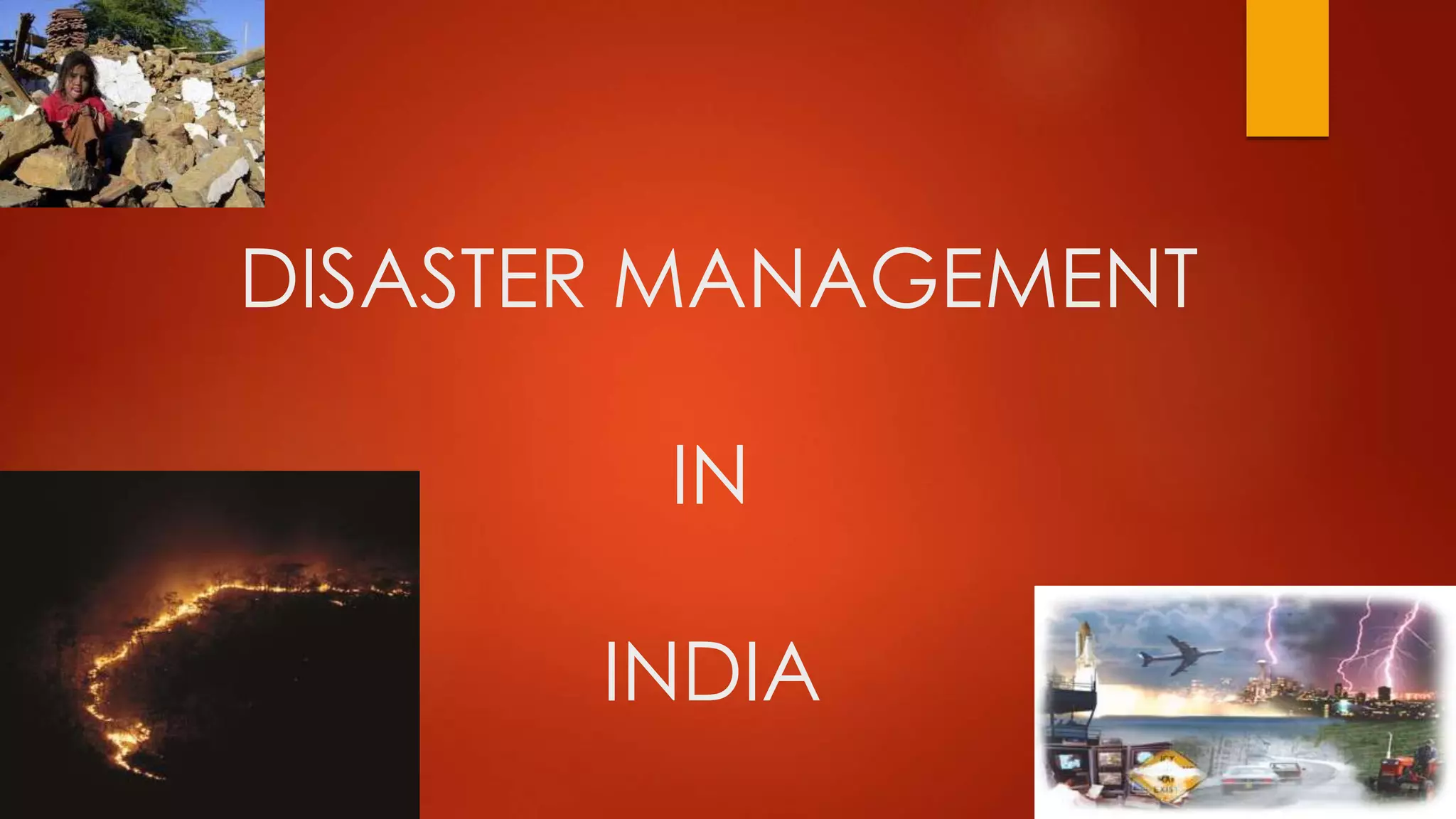
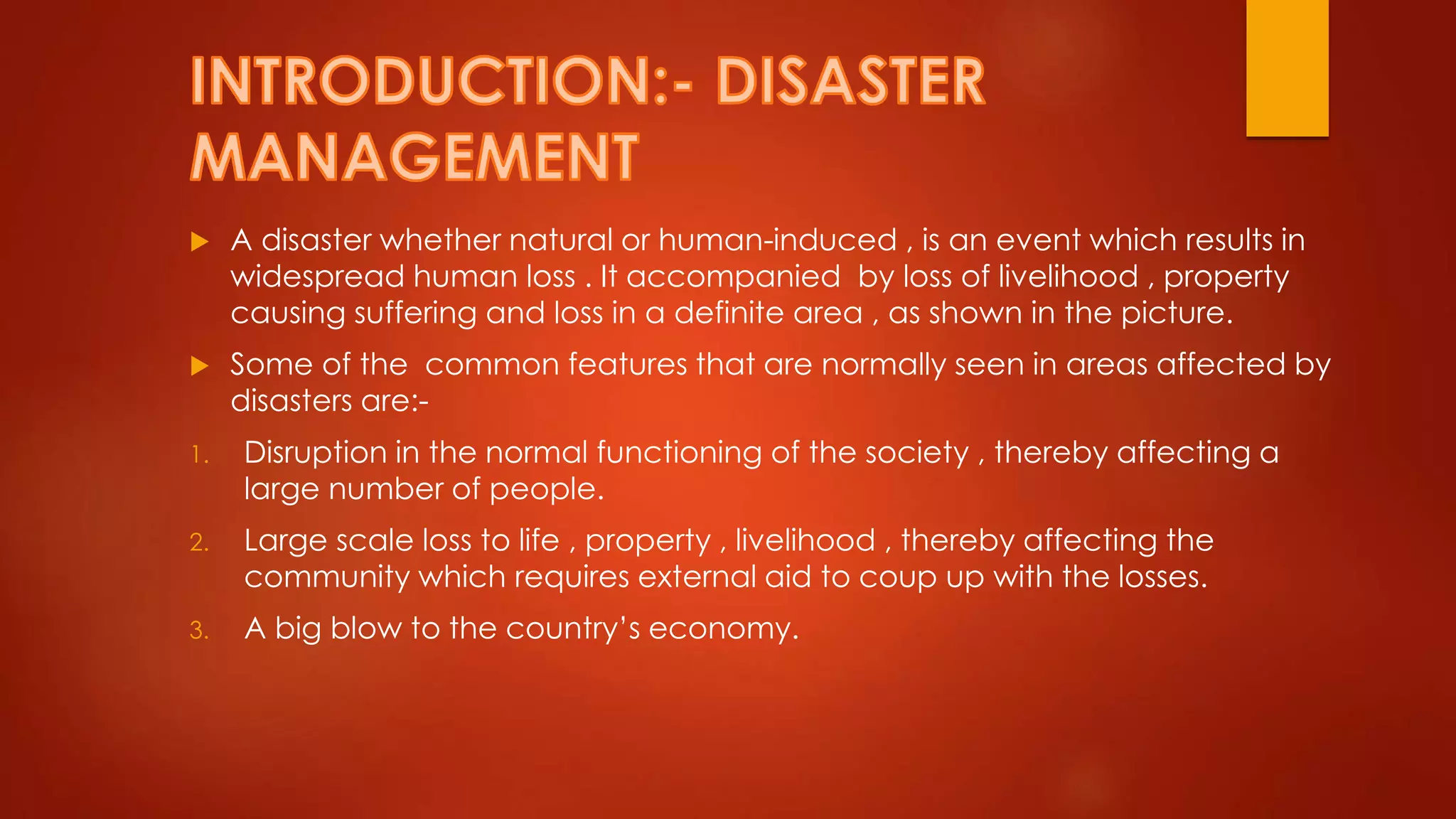
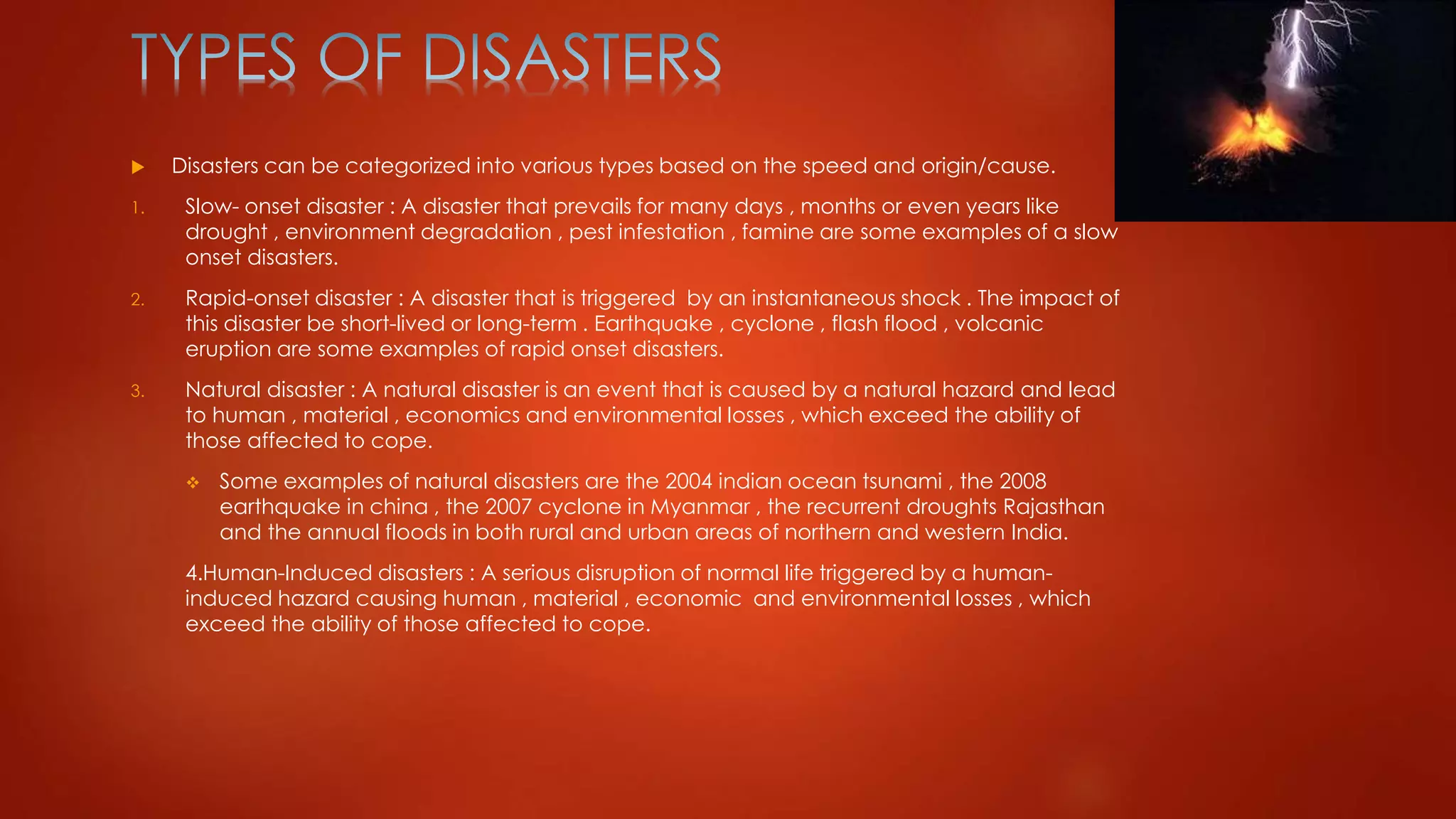
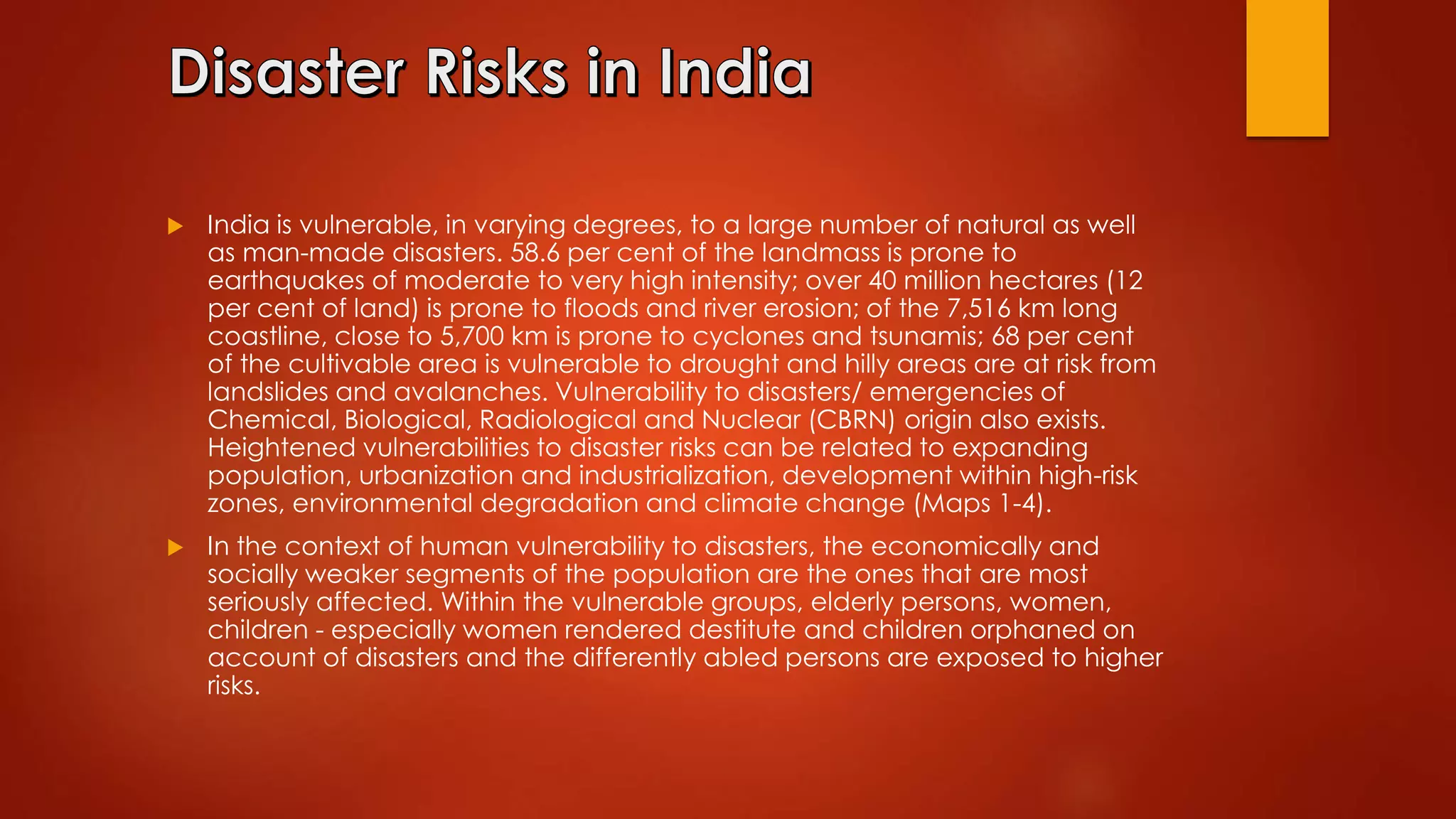
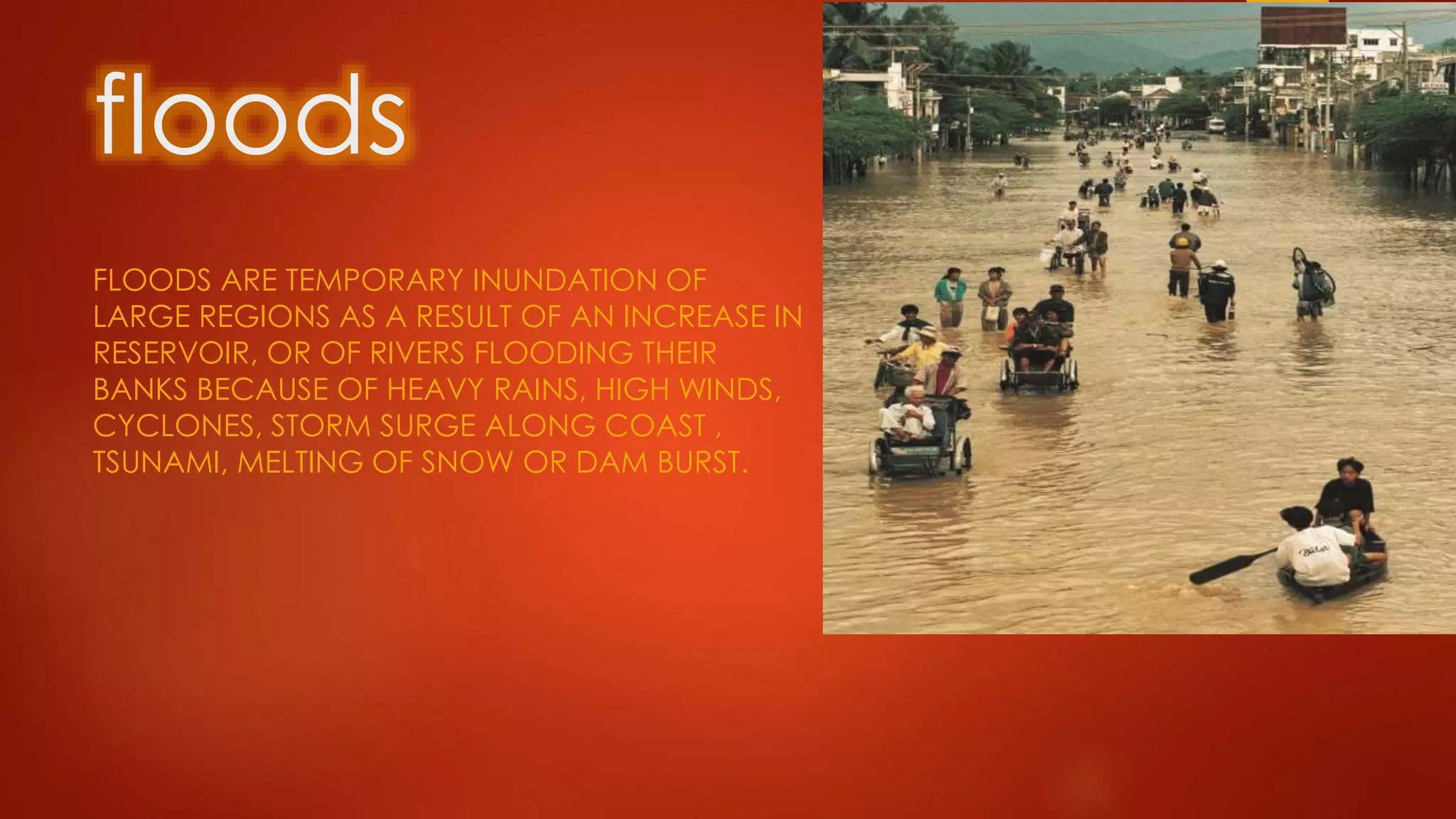
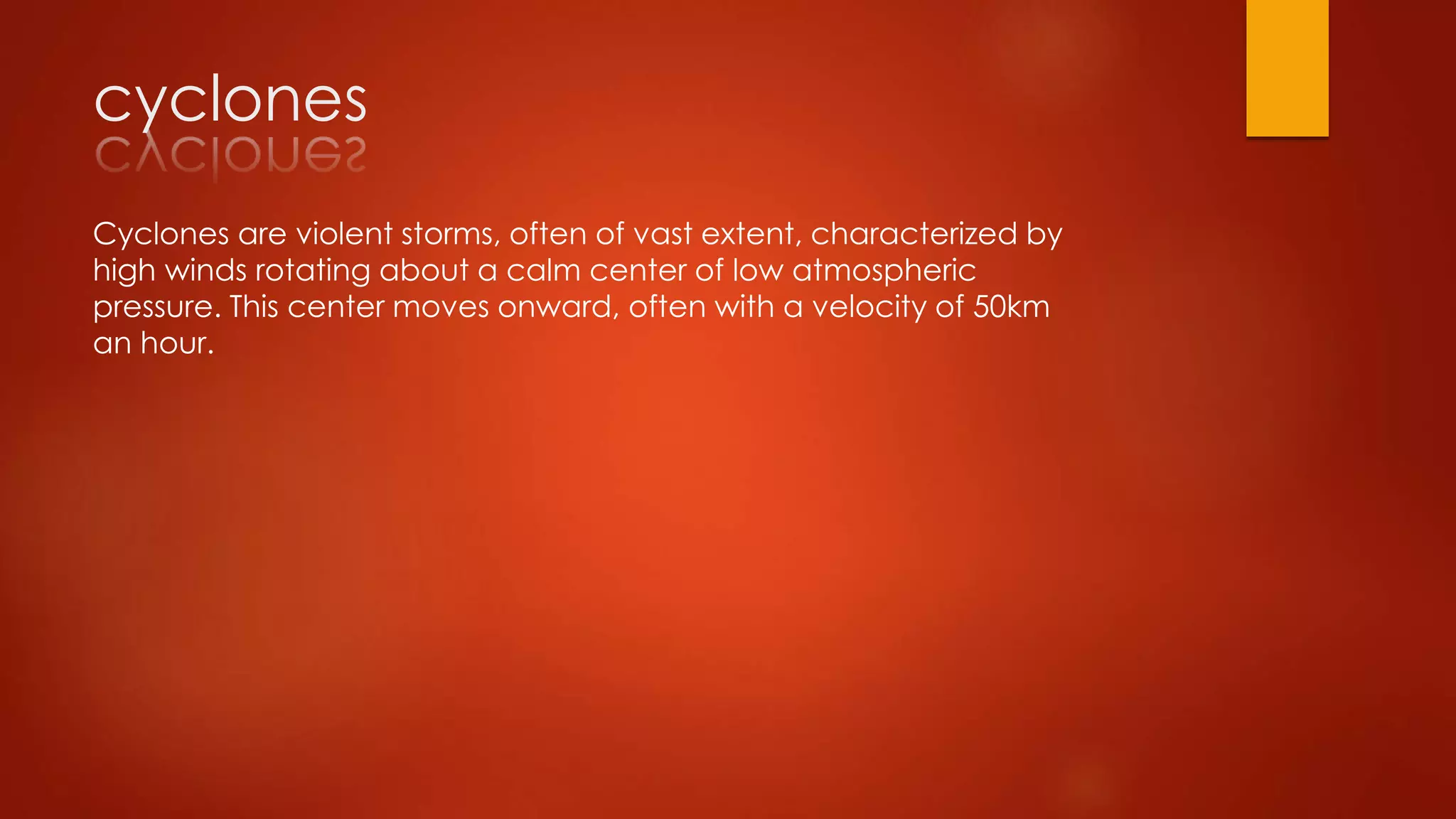
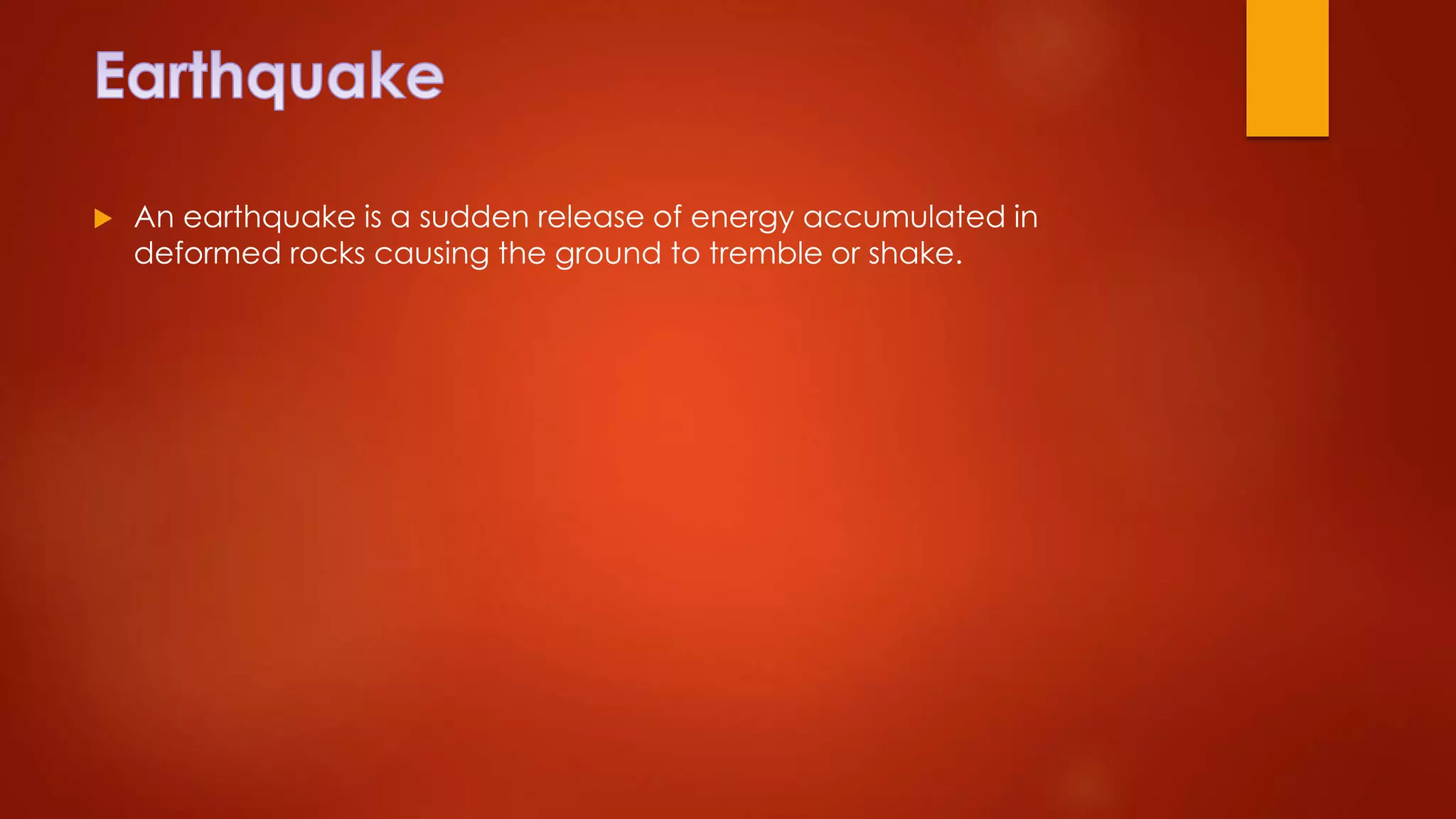
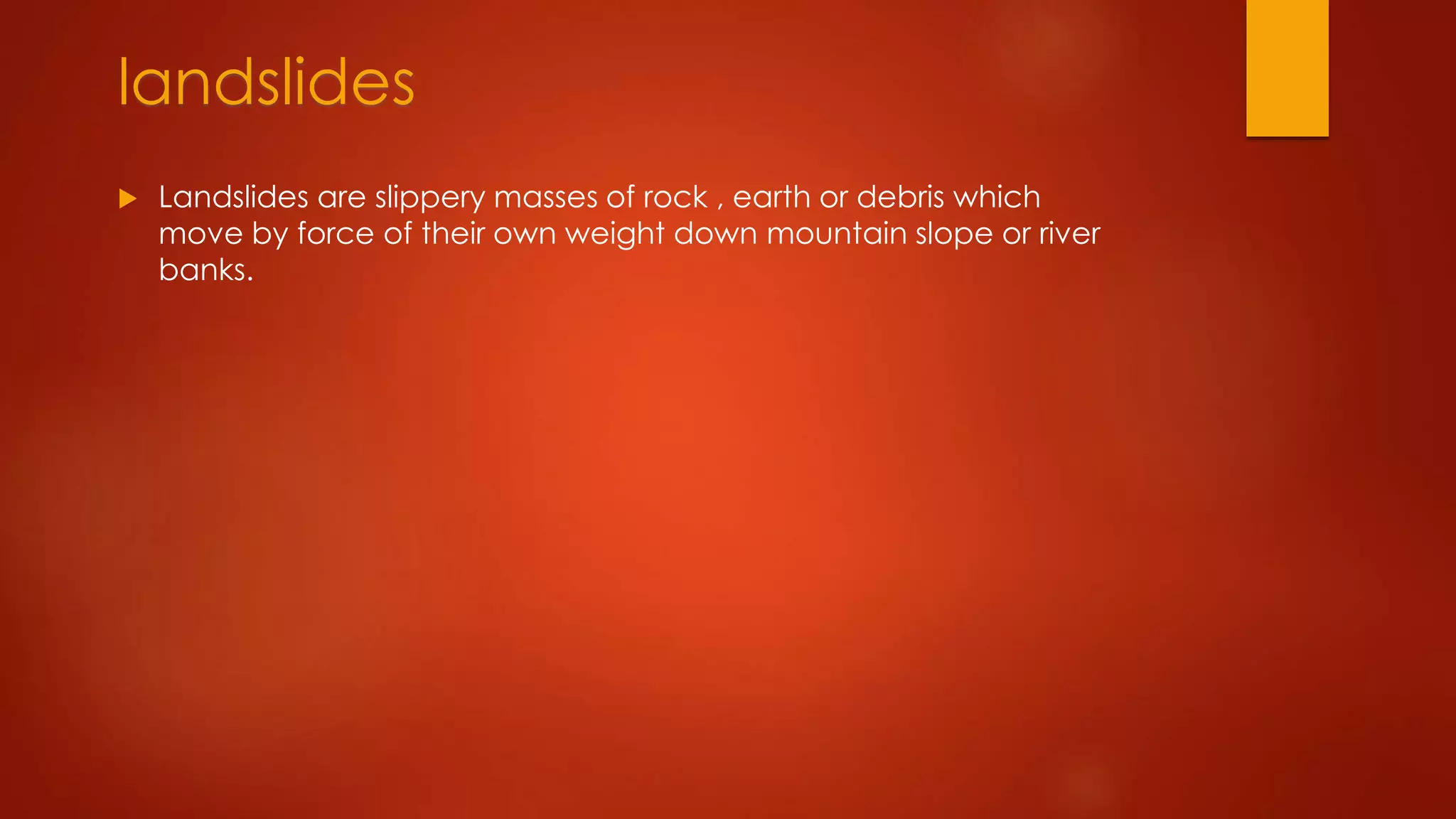
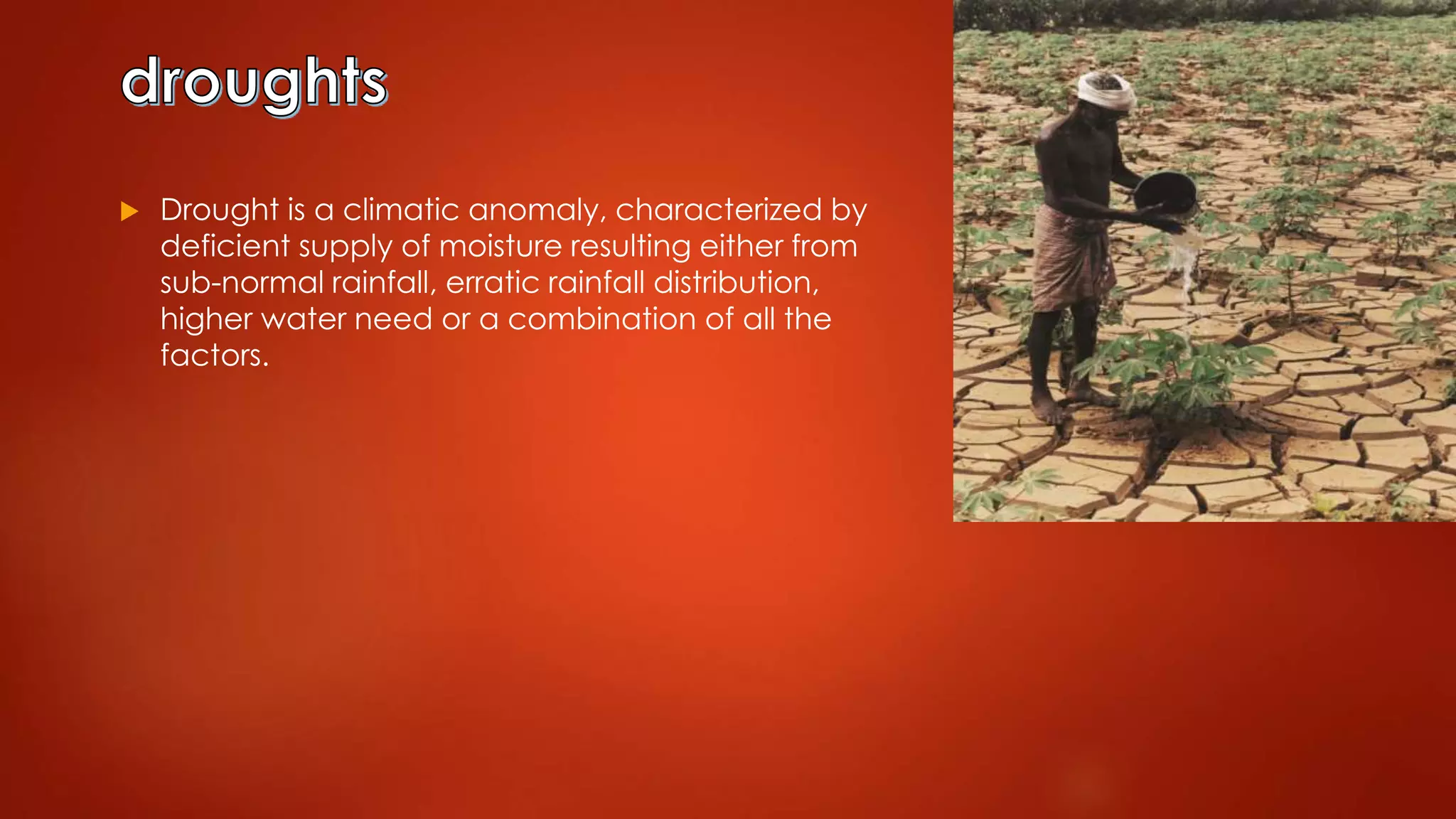
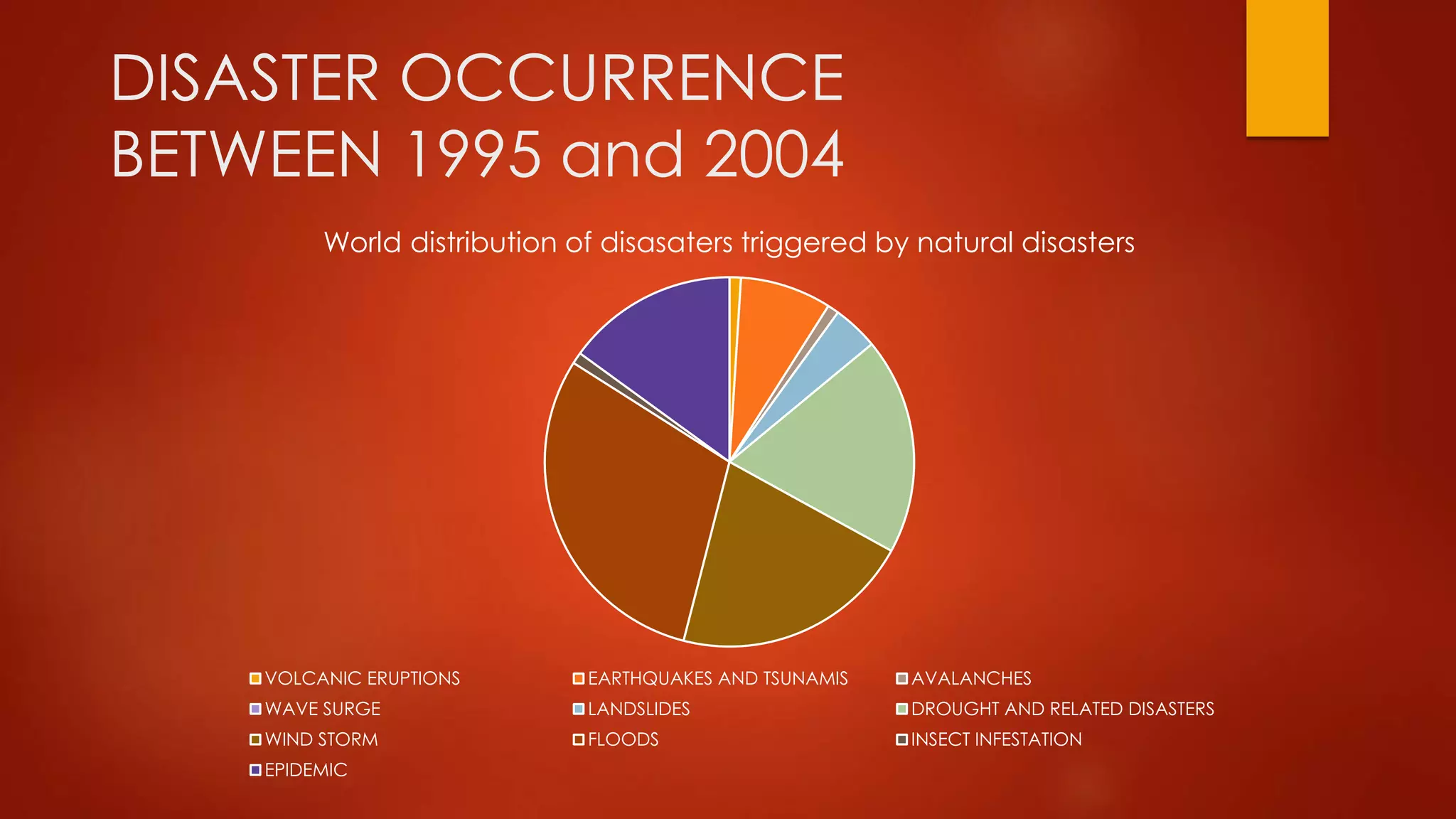
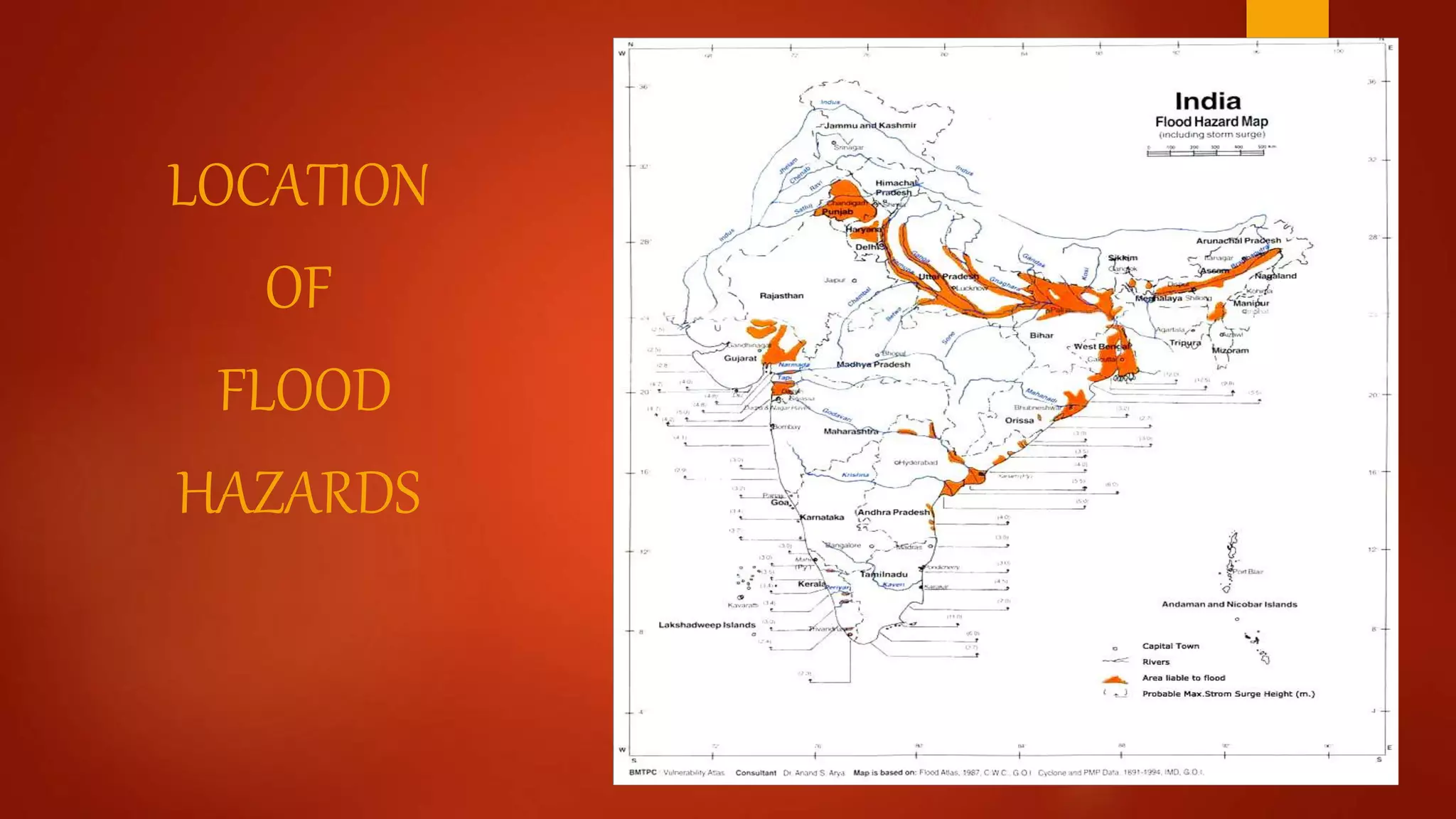
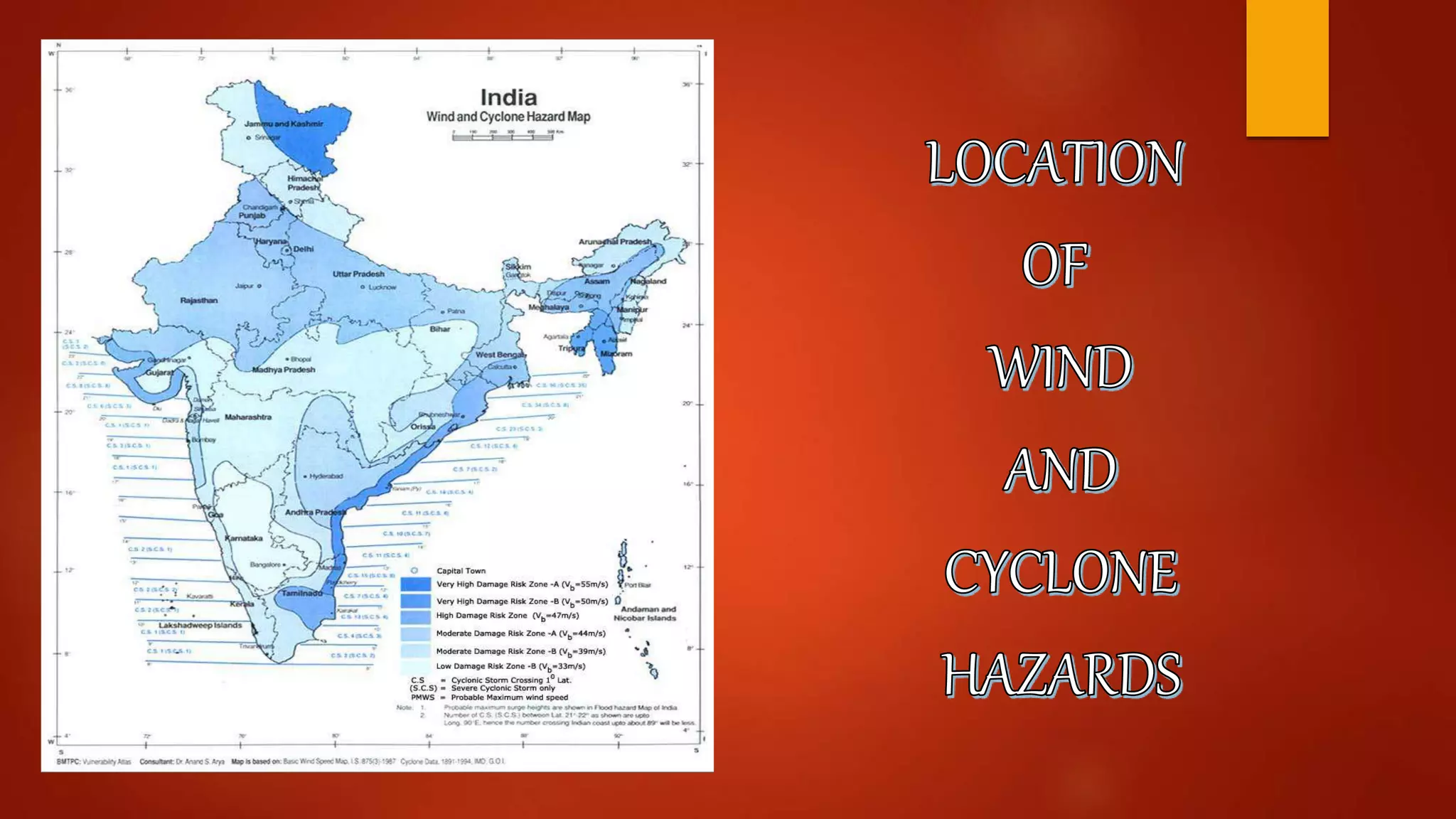
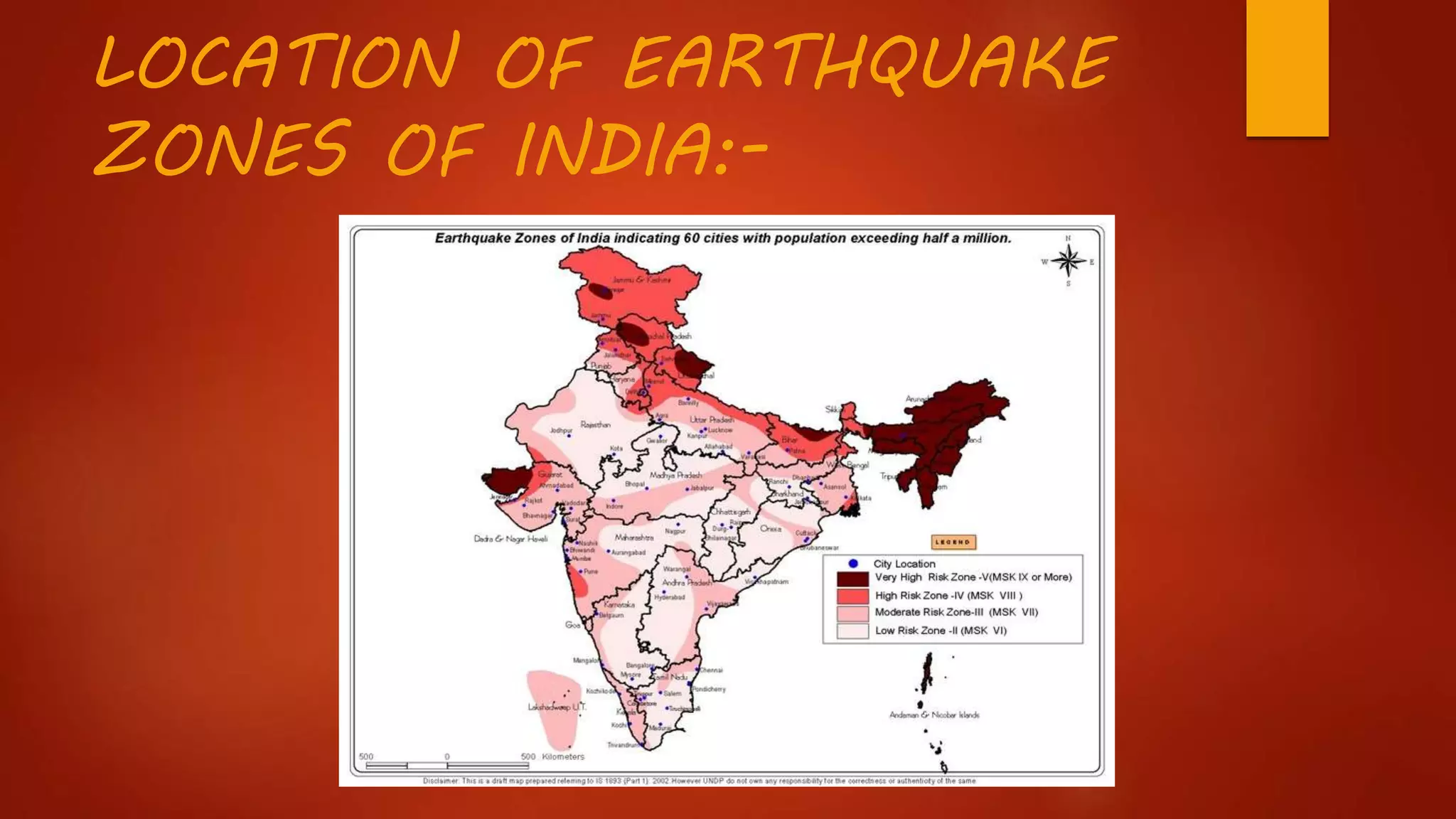
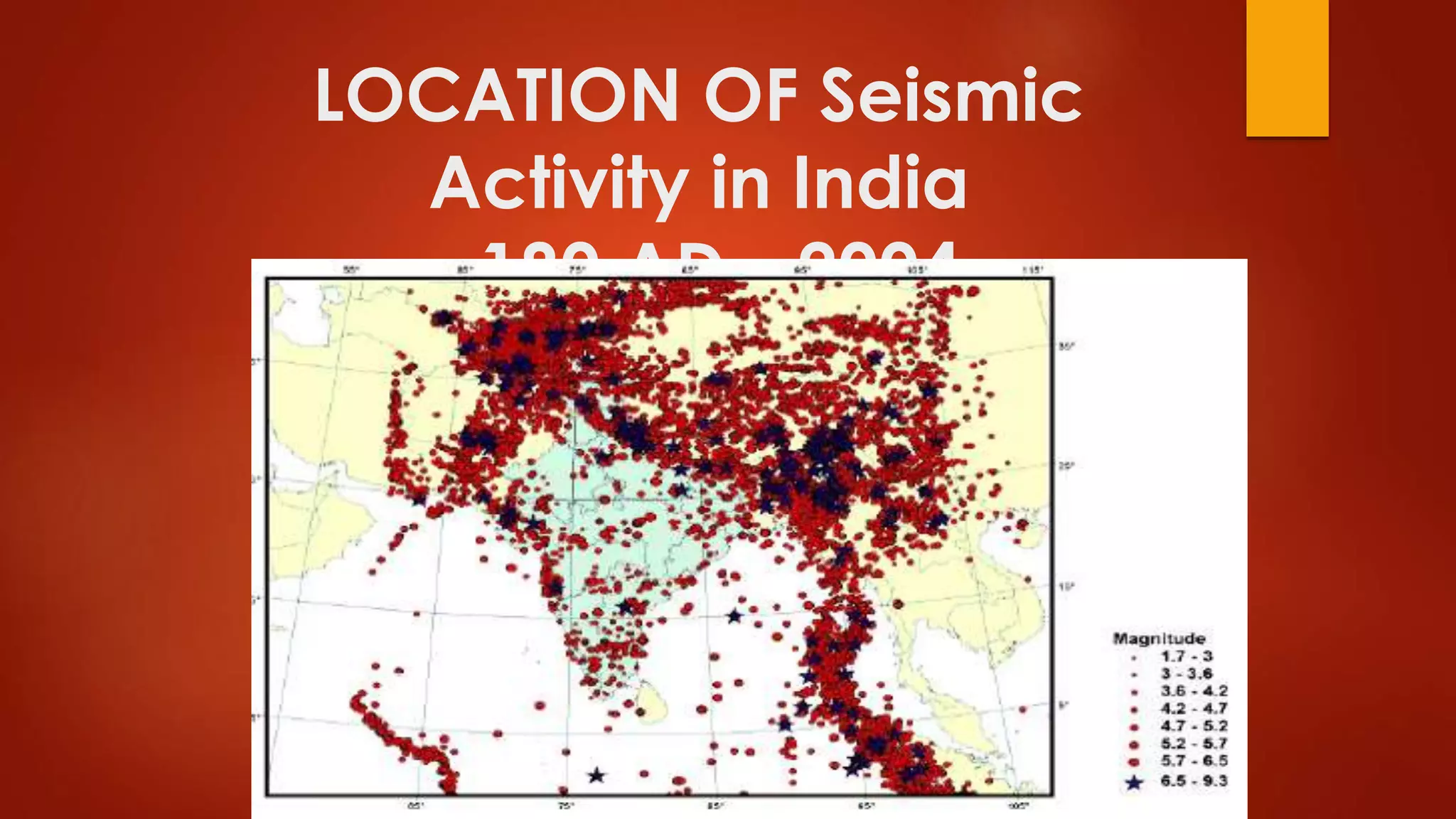

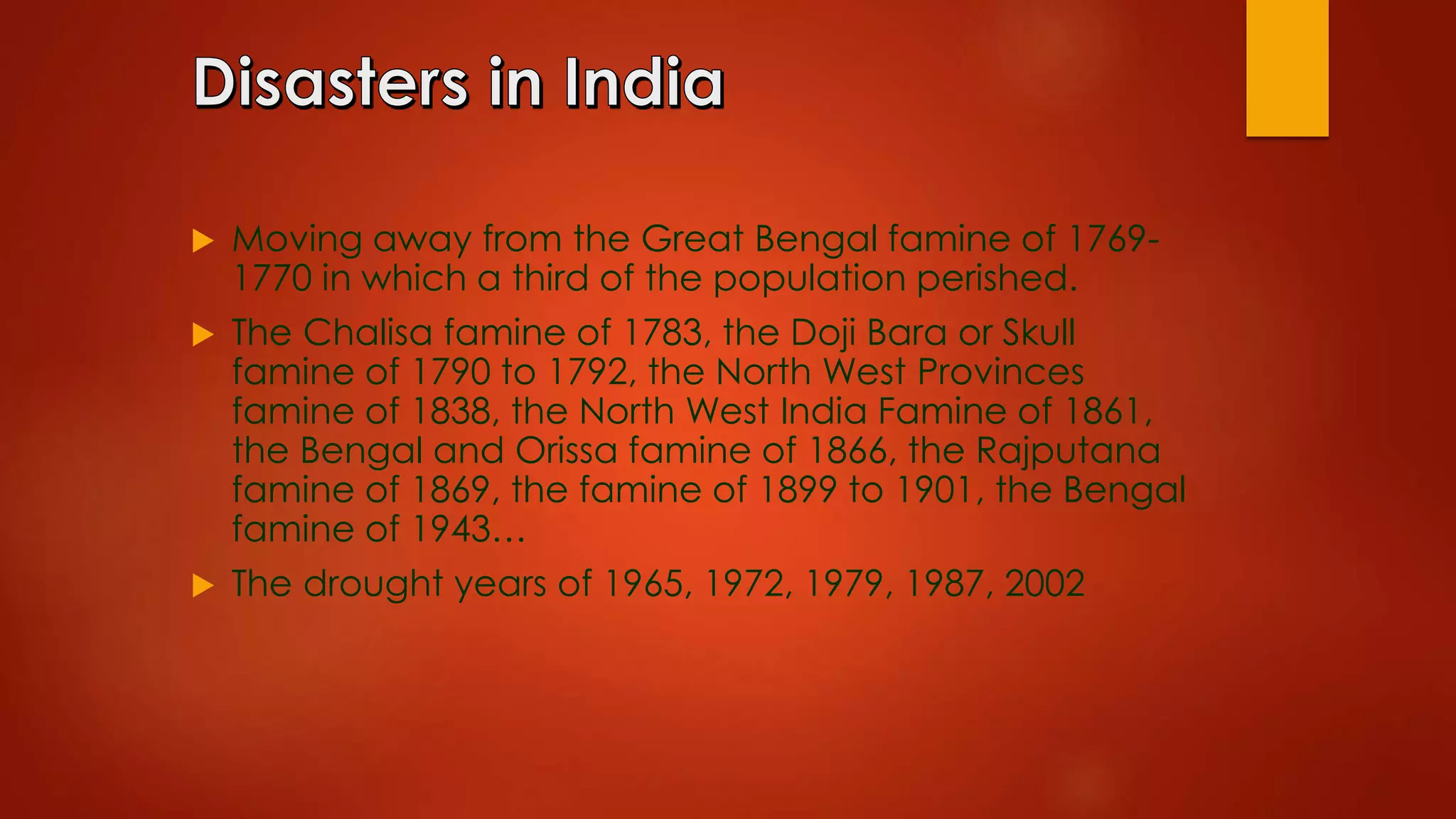
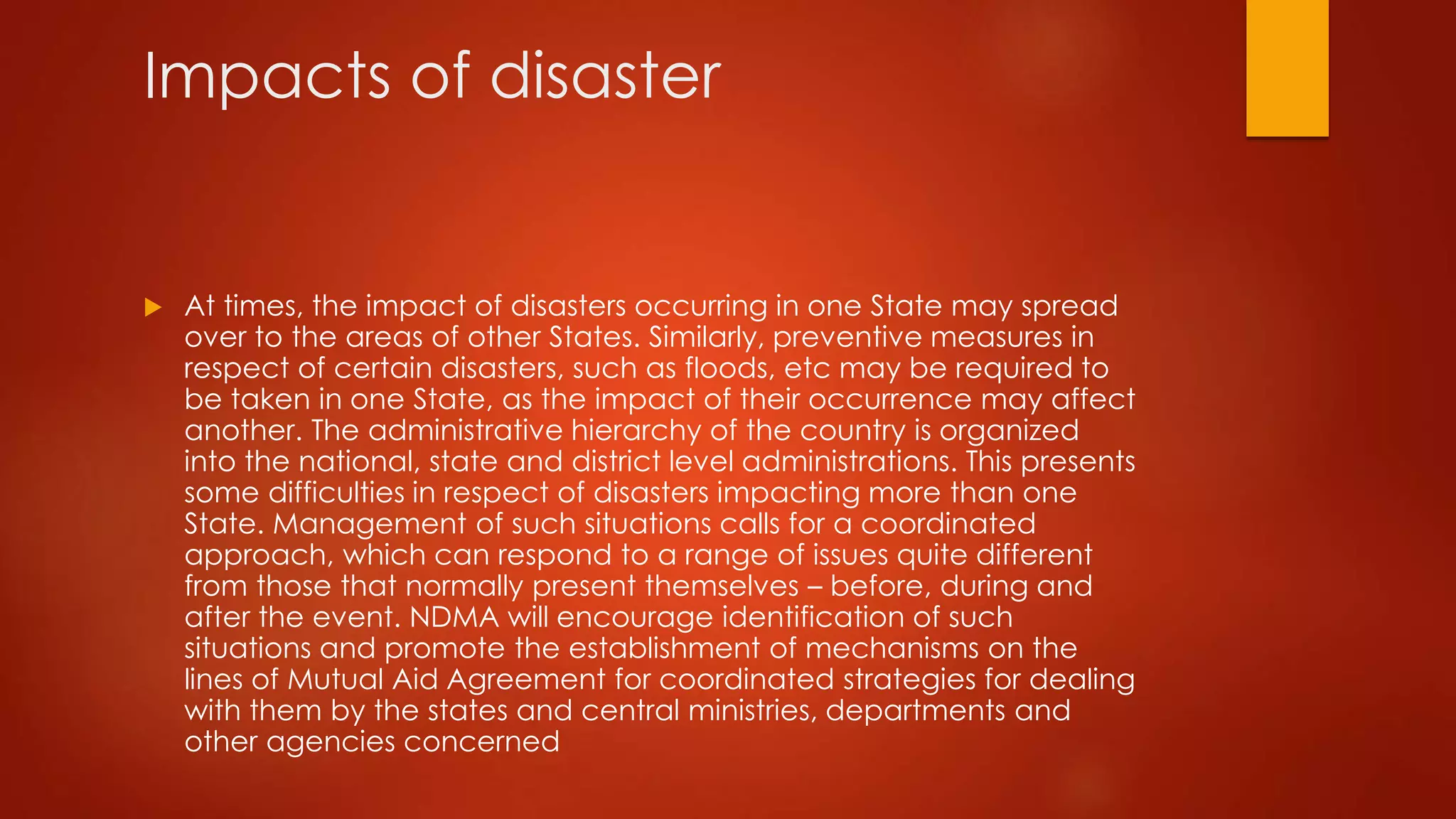
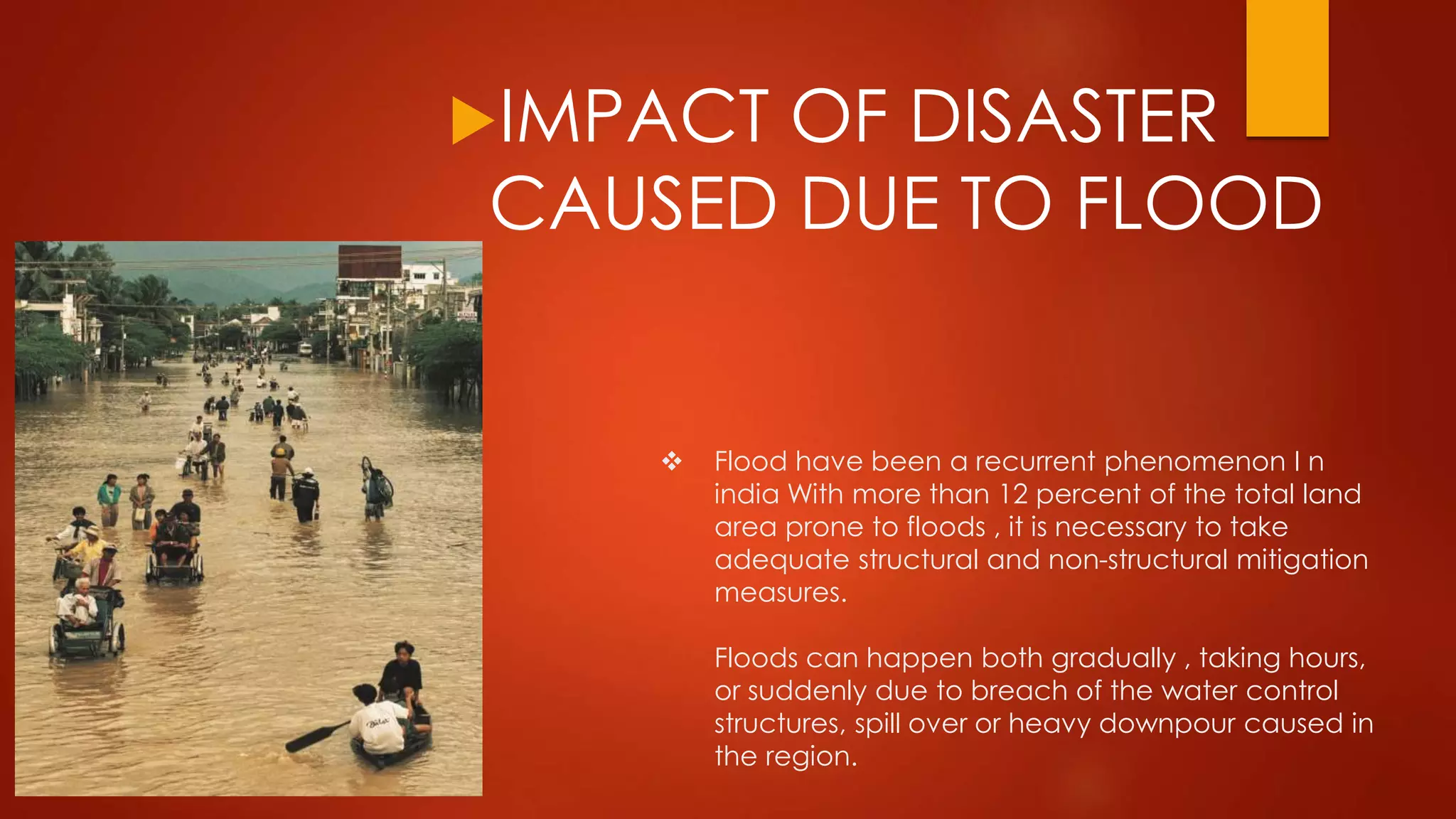
![WHAT IS VULNERABILITY?
Vulnerability is the condition determined by physical , social , economics and
environmental factors or processes , which increases the susceptibility of a
community to the Impact of hazards.
During the Gujarat earthquake {2001} , for example , people living in the old city of
Bhuj with narrow roads , newly-constructed unsafe high-rise buildings and a high
density of population faced more injuries And lose of life during the earthquake ,
than those living In the suburbs . The people in subrubs had broader roads and
single buildings and a lower density of population, which helped quick exit from
falling buildings during the earthquake. Thus, we can say that people living in the
old city of Bhuj were more vulnerable than those living in suburbs.
Among those who are more vulnerable to disasters are people who are socially
and economically under-privileged. [for example, people living in low lying areas
are prone to floods which thereby damage their houses and affect their livelihood.]
Lack resources also limits their ability to respond and cope with the disaster. In the
terms of vulnerability , young children , elderly , physically challenged are the ones
who are likely to be affected more.](https://image.slidesharecdn.com/s-150104023233-conversion-gate02/75/Disaster-management-By-vivek-bhatt-19-2048.jpg)


